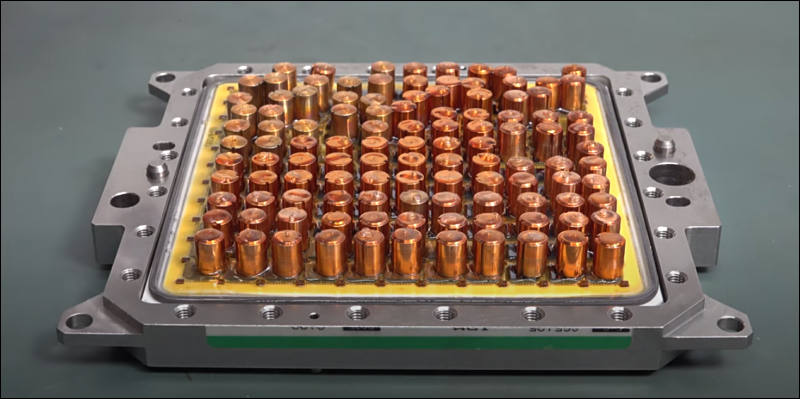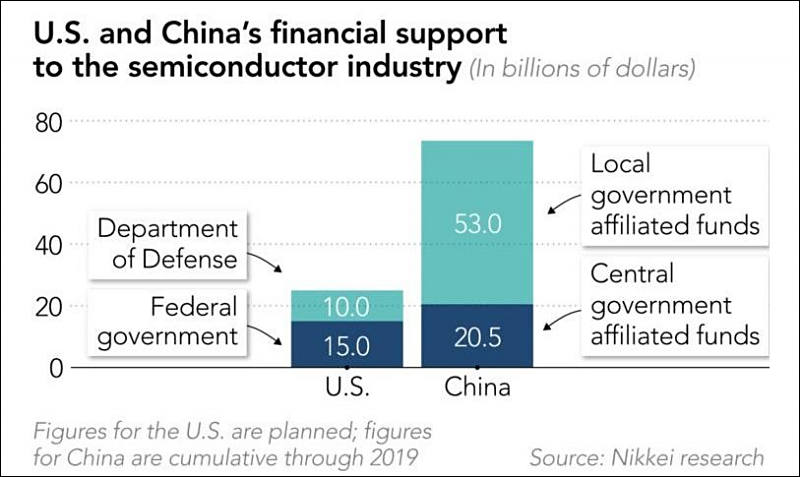
It allows to keep PV going, with more focus towards AI, but keeping be one of the few truly independent places.
-
There's always Plan B... tunnel from China to TSMC is almost complete... all machines and engineers will suddenly wake up in mainland :)
-
SMIC FinFET N+1 advanced technology is total joke.
Let me explain, it is being made on equipment for 40-65nm process (and they have not a lot of such even), and claimed as being 7nm class, this is lie. Of course it is equivalent to around 28nm old process.
Their idea is to use extreme amount of masks and exposures, it works for some military orders and for marketing purposes, but does not work for any commercial order.
Cost and performance of smartphone chip will very bad.
-
TSMC expects to post revenues of between US$12.4 billion and US$12.7 billion in the fourth quarter of 2020, which is a 3.4% sequential increase at the midpoint. Gross margin and operating margin for the third quarter are estimated at 51.5-53.5% and 40.5-42.5%, respectively.
TSMC also raised its global semiconductor market outlook this year to 4-6% growth, while revising its foundry market growth forecast to nearly 20% from the previously estimated 14-19%. TSMC expects to post a 30% revenue surge in US dollar term this year.
TSMC's net profits grew 35.9% on year and 13.6% sequentially to NT$137.31 billion (US$4.78 billion) in the third quarter of 2020. EPS for the quarter came to NT$5.30, or US$0.90 per ADR unit.
-
WILL HUAWEI MAKE A COMEBACK WHEN THE CHIPS ARE DOWN? by Gerry Brown
Huawei still stands tall despite years of ferocious onslaughts by the US bully wielding the “whole of nation " power and strong-arming its allies to wipe out the private Chinese company . Lesser businesses would have died a brutal and quick death on the first attack. The last straw that broke Huawei's back was a global ban slapped by USA(--) on supply of high-end chips to Huawei for its top of the range smartphones. Plus embargo of EUV lithography machines produced only by Dutch ASML to SMIC for manufacture of sub-10 nm chips. The semiconductor siege on Huawei seems complete. Can Huawei make a comeback, like it did after walking out of a deal to sell the company to Motorola for $7.5 billion in 2003? -
As predicted, US manufacturers also want free money
The Decadal Plan, developed with contributions from a broad cross-section of leaders in academia, government, and industry, identifies five “seismic shifts” shaping the future of chip technology and calls for an annual $3.4 billion federal investment over the next decade to fund semiconductor R&D across these five areas.
“Federal government and private sector investments in semiconductor R&D have propelled the rapid pace of innovation in the U.S. semiconductor industry, spurring tremendous growth throughout the U.S. and global economies,” said John Neuffer, SIA president and CEO. “As we enter a new era, however, a renewed focus on public-private research partnerships is necessary to address the seismic shifts facing chip technology. The federal government must invest ambitiously in semiconductor research to keep America on top in semiconductors and the game-changing future technologies they enable.”
The Decadal Plan’s proposed additional federal investment of $3.4 billion annually would strengthen the U.S. semiconductor industry’s global leadership position, add $161 billion to U.S. GDP, and create half a million U.S. jobs in the next 10 years, according to findings from an earlier SIA study.
And ti is very small early start, very soon they will start asking for $100 billions.
-
TSMC CEO CC Wei has reiterated his previous remark that the foundry expects to see 5nm process technology to account for 8% of its total wafer revenues this year. The proportion will climb further to nearly 20% or above the level, said Wei.
TSMC turned into essentially monopoly with extreme profit margins on 7nm and especially 5nm devices.
-
Liquid metal solutions as sign of issues
ASUS notebooks
Playstation 5
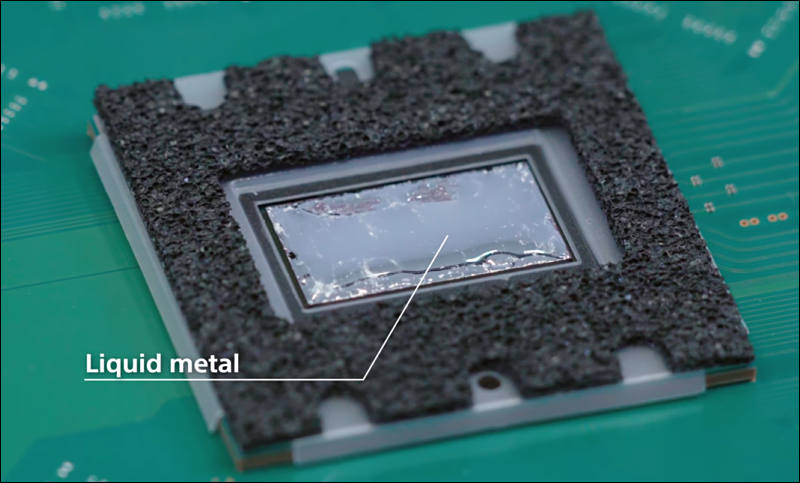

 sa14950.jpg800 x 483 - 55K
sa14950.jpg800 x 483 - 55K -
Intel Ice Lake-SP CPUs delayed again
At best they will become available in April 2021.
Issues with horrible 10nm process quality remain.
For complex multicore processors that are able to run at high frequency company have 4-7 defective units for each normal one.
-
The value of the global semiconductor material market is expected to rise only slightly from US$52.88 billion in 2019 to US$52.94 billion in 2020, and is estimated to grow about 6 percent from 2020 to US$56.36 billion in 2021.
China is expected to rank as the second largest semiconductor material market with purchases valued at US$9.34 billion in 2020 and US$10.42 billion in 2021, ahead of South Korea's US$8.54 billion in 2020 and US$9.04 billion in 2021.
In terms of semiconductor production equipment, Taiwan was the third largest market with US$8.63 billion in purchases for the first seven months of this year, up 10.6 percent from a year earlier.
China was the largest semiconductor production equipment buyer in the seven-month period with purchases at US$9.84 billion, up 45.2 percent ahead of South Korea, which spent US$9.49 billion on semiconductor equipment, up 54.1 percent.
Worldwide, sales of semiconductor production equipment for the seven-month period totaled US$38.43 billion, up 23.2 percent from a year earlier.
-
Fewer players due to rising costs of development of LSI's
Toshiba has announced it will dissolve its system LSI business, with the move to affect about 770 employees.
Toshiba Electronic Devices & Storage (TDSC), which operates Toshiba's system LSI business, indicated it will concentrate resources on analog ICs and microcontroller units for motor control, and continue to direct product development resources to the area. In the advanced system-on-a-chip business, TDSC will end new product development but will continue to support existing customers.
-
TSMC is on track to enter 3nm chip production with monthly output set to reach 55,000 wafers in the second half of 2022, according to sources familiar with the matter. The 3nm process output will climb further to 100,000 units in 2023.
Number of various paper promises from TSMC rises exponentially, something is not right.
We can clearly see something is bad with 7nm+ EUV process, not enough capacity even for original 7nm and tiny capacity for 5nm so even Apple had been forced to make 2-3x less CPUs despite banning Huawei and all other clients.
-
Taiwan President Tsai Ing-wen promised on Thursday to help the island’s key semiconductor industry overcome difficulties and consolidate its leading position, offering support to a sector increasingly caught up in China-U.S. trade tensions.
As I told - as soon as smartphone money that finances all recent developments started to dry we are going to see Japanese model - direct injection of local government money, as well as billions from US and EU freshly printed database records.
-
Sony and Microsoft’s new-generation game consoles are expected to be out of stock until mid-2021. In second half availability will slowly improve.
The quantity of ordered wafers is as high as 102,000, and the recent yield rate is estimated to reach 58%, and TSMC wants to it improve significantly after the fourth quarter.
-
Close look at the 14nm and 7nm transistors
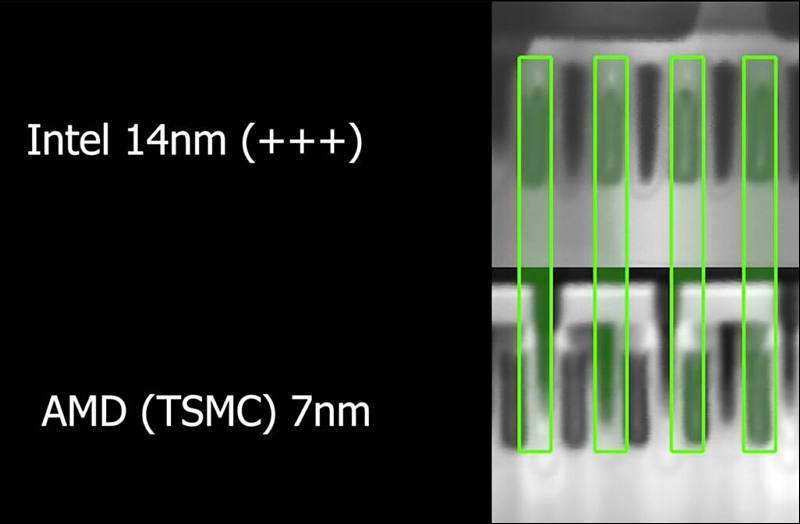

 sa14742.jpg800 x 524 - 40K
sa14742.jpg800 x 524 - 40K -
As chip makers have reached the limits of atomic-scale circuitry and the physics of electrons, Moore’s law has slowed, and some say it’s over. But a different law, potentially no less consequential for computing’s next half century, has arisen.
I call it Huang’s Law, after Nvidia Corp. chief executive and co-founder Jensen Huang. It describes how the silicon chips that power artificial intelligence more than double in performance every two years. While the increase can be attributed to both hardware and software, its steady progress makes it a unique enabler of everything from autonomous cars, trucks and ships to the face, voice and object recognition in our personal gadgets.
Between November 2012 and this May, performance of Nvidia’s chips increased 317 times for an important class of AI calculations, says Bill Dally, chief scientist and senior vice president of research at Nvidia. On average, in other words, the performance of these chips more than doubled every year, a rate of progress that makes Moore’s Law pale in comparison.
Tragedy is that energy per each performance unit is no longer dropping much.
-
Quite weird table if do not know that it is
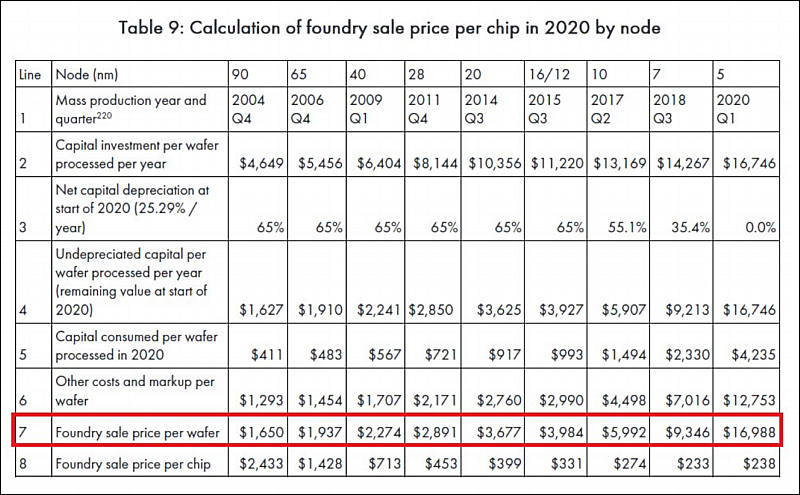
From https://cset.georgetown.edu/research/ai-chips-what-they-are-and-why-they-matter/
It is actually about some abstract big AI chips (610 mm2, 90.7 billion transistors at 148.2 MTr/mm2), but about real CPUs or GPUs that changes with process.
And all numbers are estimates, as making real numbers public could shock the public, so it won't be allowed no matter that.
TSMC sells a 300mm wafer processed using its N5 technology for about $16,988. By contrast, the world’s largest contract maker of semiconductors charges around $9,346 per 300mm wafer patterned using its N7 node as well as $3,984 for a 300mm wafer fabbed using its 16nm or 12nm technology.

 sa14660.jpg800 x 495 - 92K
sa14660.jpg800 x 495 - 92K -
TSMC's 5nm process capacity will be fully utilized through the end of 2020, thanks particularly to strong orders for Apple's new iPad Air and upcoming iPhones, as well as the Mac, according to industry sources.
Most importantly we now have proof that it was Apple who stood behind all Huawei problems.
Nice humble looking Tim Cook is the villain.
-
If this personal attacks are true, it will be beyond repair indeed.
What strikes me is the relaxed position of USA fucking up china In the licensees but having china make them all it’s high tech stuff.
Let’s wait and see the complexes problems this party’s will have sooner than later
I feel it will be historic news.
-
ASML
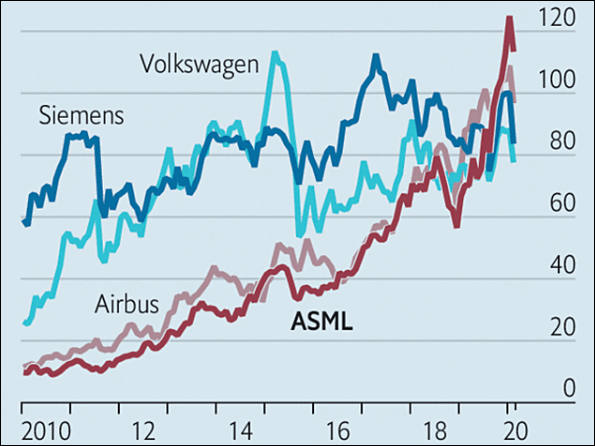
Destruction of this steppers manufacturer is very important to China at current stage as it will allow to damage western powers beyond repair.
Attack on some manufacturer stages facilities or core people is very probable and very good for overall development.

 sa14603.jpg595 x 446 - 44K
sa14603.jpg595 x 446 - 44K -
Something bad is happening with TSMC last months
Sony Corp. has cut its estimated PlayStation 5 production for this fiscal year by 4 million units, down to around 11 million, following production issues with its custom-designed system-on-chip for the new console.
Company has come up against manufacturing issues, such as production yields as low as 50% for its SOC, which have cut into its ability to produce as many consoles as it wishes, said the people, who asked to remain anonymous because the deliberations aren’t public. Yields have been gradually improving but have yet to reach a stable level, they added.
Rumor is that Sony placed bet on so called 7nm+ process with EUV usage and this is reason of all issues.
As TSMC cancelled its usage in all AMD chiplets adn all other major orders and now reason is clear.
-
TSMC did not ship requested number of Kirin processors
Industry rumors are that TSMC can't produce enough chips using their 5nm process. Hence Huawei got from 1/4 to 1/3 of expected Kirin new LSI stock and can postpone any smartphones using them.
Apple also moved smartphones release dates to be able to collect enough stock of their LSI, rumor is that due to TSMC issues Apple won't be able to actually ship their new ARM notebooks in this year in any good amount.
-
All new Apple smartphones will start to use heatpipes
Due to problems with lowering thermal performance while going to 5nm and further to 3nm (despite TSMC and Samsung claims) Apple will be forced to significantly update thermal performance of their designs.
Two solutions are expected - use of metal in the rear casing and use up to 3 heatpipes to spread the abnormal heat from central processor LSI.
Non throttling performance can drop to mere 3-4 minutes for 2021 flagmans, causing LSI to drop performance by 40-50%.
Howdy, Stranger!
It looks like you're new here. If you want to get involved, click one of these buttons!
Categories
- Topics List23,986
- Blog5,725
- General and News1,353
- Hacks and Patches1,152
- ↳ Top Settings33
- ↳ Beginners255
- ↳ Archives402
- ↳ Hacks News and Development56
- Cameras2,364
- ↳ Panasonic993
- ↳ Canon118
- ↳ Sony156
- ↳ Nikon96
- ↳ Pentax and Samsung70
- ↳ Olympus and Fujifilm100
- ↳ Compacts and Camcorders300
- ↳ Smartphones for video97
- ↳ Pro Video Cameras191
- ↳ BlackMagic and other raw cameras116
- Skill1,960
- ↳ Business and distribution66
- ↳ Preparation, scripts and legal38
- ↳ Art149
- ↳ Import, Convert, Exporting291
- ↳ Editors191
- ↳ Effects and stunts115
- ↳ Color grading197
- ↳ Sound and Music280
- ↳ Lighting96
- ↳ Software and storage tips266
- Gear5,420
- ↳ Filters, Adapters, Matte boxes344
- ↳ Lenses1,582
- ↳ Follow focus and gears93
- ↳ Sound499
- ↳ Lighting gear314
- ↳ Camera movement230
- ↳ Gimbals and copters302
- ↳ Rigs and related stuff273
- ↳ Power solutions83
- ↳ Monitors and viewfinders340
- ↳ Tripods and fluid heads139
- ↳ Storage286
- ↳ Computers and studio gear560
- ↳ VR and 3D248
- Showcase1,859
- Marketplace2,834
- Offtopic1,319


